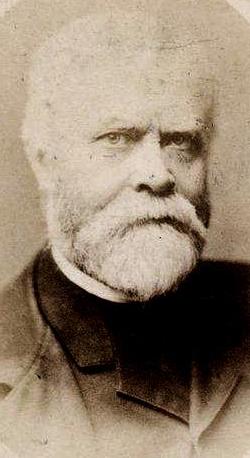|
Bulletin De La Société Géologique De France
The ''Bulletin de la Société Géologique de France'', otherwise known as ''BSGF - Earth Sciences Bulletin'' is a peer-reviewed open access scientific journal covering Earth sciences. The journal publishes articles, short communications, reviews, comments and replies. It is published by EDP Sciences and the editor-in-chief is Laurent Jolivet ( Sorbonne Université, Paris). The journal was established in 1830. It is a publication of the Société géologique de France. Most of the older content, published before 1924 is available online at the Biodiversity Heritage Library. The journal is a historically important venue for great debates on the various interpretations of the history of the earth and the history of life between 1830 and 1860. Abstracting and indexing The journal is abstracted and indexed in: Biological taxa first described in this journal Many new genera and species have been first described in this journal. For example: * The crocodyliform genus Siamosuchus was ... [...More Info...] [...Related Items...] OR: [Wikipedia] [Google] [Baidu] |
Earth Science
Earth science or geoscience includes all fields of natural science related to the planet Earth. This is a branch of science dealing with the physical, chemical, and biological complex constitutions and synergistic linkages of Earth's four spheres: the biosphere, hydrosphere/ cryosphere, atmosphere, and geosphere (or lithosphere). Earth science can be considered to be a branch of planetary science but with a much older history. Geology Geology is broadly the study of Earth's structure, substance, and processes. Geology is largely the study of the lithosphere, or Earth's surface, including the crust and rocks. It includes the physical characteristics and processes that occur in the lithosphere as well as how they are affected by geothermal energy. It incorporates aspects of chemistry, physics, and biology as elements of geology interact. Historical geology is the application of geology to interpret Earth history and how it has changed over time. Geochemistry studies the che ... [...More Info...] [...Related Items...] OR: [Wikipedia] [Google] [Baidu] |
Impact Factor
The impact factor (IF) or journal impact factor (JIF) of an academic journal is a type of journal ranking. Journals with higher impact factor values are considered more prestigious or important within their field. The Impact Factor of a journal reflects the yearly mean number of article citations published in the last two years. While frequently used by universities and funding bodies to decide on promotion and research proposals, it has been criticised for distorting good scientific practices. Impact Factor is a scientometric index calculated by Clarivate, Clarivate's Web of Science. History The impact factor was devised by Eugene Garfield, the founder of the Institute for Scientific Information (ISI) in Philadelphia. Impact factors began to be calculated yearly starting from 1975 for journals listed in the ''Journal Citation Reports'' (JCR). ISI was acquired by Thomson Scientific & Healthcare in 1992, and became known as Thomson ISI. In 2018, Thomson Reuters, Thomson-Reuters ... [...More Info...] [...Related Items...] OR: [Wikipedia] [Google] [Baidu] |
Publications Established In 1830
To publish is to make content available to the general public.Berne Convention, article 3(3) URL last accessed 2025-05-23.Universal Copyright Convention, Geneva text (1952), article VI . URL last accessed 2010-05-10. While specific use of the term may vary among countries, it is usually applied to , images, or other |
Hans Georg Stehlin
Hans Georg Stehlin (1870–1941) was a Swiss paleontologist and geologist. Stehlin specialized in vertebrate paleontology, particularly the study of Cenozoic mammals. He published numerous scientific papers on primates and ungulates. He was president of the commission of the Natural History Museum of Basel. In 1910 Stehlin coined the term ''Grande Coupure'' to refer to the extinction event which occurred 33.9 millions of years ago, which defines the Eocene-Oligocene limit. It originated a huge change in organisms, especially the mammals of Europe. (in French). Stehlin is commemorated in the scientific name of a species of lizard, ''Gallotia stehlini''.Beolens, Bo; Watkins, Michael; Grayson, Michael (2011). ''The Eponym Dictionary of Reptiles''. Baltimore: Johns Hopkins University Press. xiii + 296 pp. ("Stehlin", p. 252). References Bibliography * External links *Stehlin, H.G. (1903). "''Die Säugetiere des schweizerischen Eocaens: critischer Catalog der Materialien'' "- St ... [...More Info...] [...Related Items...] OR: [Wikipedia] [Google] [Baidu] |
Charles Lory
Charles Lory (30 July 1823 – 3 May 1889) was a French geologist. He was born at Nantes. He graduated D. Sc. in 1847. In 1852 he was appointed to the chair of geology at the University of Grenoble, and in 1881 to that of the École Normale Supérieure in Paris. He was distinguished for his research on the geology of the French Alps, being engaged in the geological survey of the ''Départements of France, départements'' of Isère, Drôme and the Hautes-Alpes, for which he prepared maps and explanatory memoirs. He dealt with disturbances in the Savoy Alps, described fan-like structures, and confirmed the views of Alphonse Favre, Jean Alphonse Favre with regard to overthrows, reversals and duplication of the stratum, strata. His contributions to geological literature also include descriptions of the fossils and stratigraphical divisions of the Lower Cretaceous and Jurassic rocks of the Jura mountains, Jura. He died in Grenoble on 3 May 1889. References {{DEFAULTSO ... [...More Info...] [...Related Items...] OR: [Wikipedia] [Google] [Baidu] |


